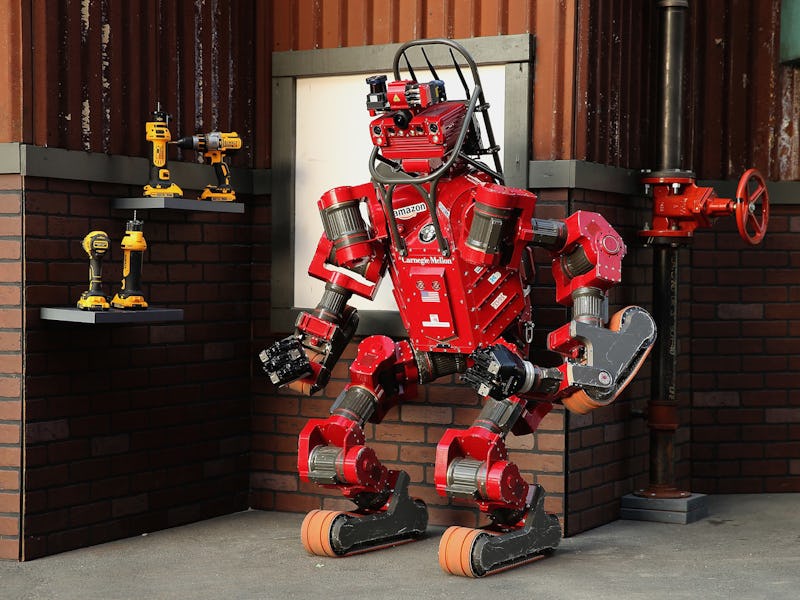Europe's euRathlon Grand Challenge Is a Real-Life 'BattleBots'
You come to Italy, you come to play.

The idle fields of a quaint port town in Tuscany, Italy will soon be soaked in the oil and grease of the world’s greatest robot champions, as designers heed the call of a robotics competition dubbed the “euRathlon.”
From September 17 to the 25, teams from 21 countries will test robotic cooperative systems in challenges over land, sea, and air, around the simulated disaster zone of a nearby power plant in the northern Italian city of Piombino. These aren’t just speculative examinations of how robotic rescue teams could save lives, but a chance to prepare for scenarios we’ve already confronted: This will be the third year that the euRathlon challenge uses the 2011 Fukushima nuclear disaster — when a major tsunami knocked out the power supply and cooling on three Fukushima Daiichi reactors, causing all three cores to meltdown and forcing an evacuation of more than 100,000 people — as its inspiration. In such situations, a robotic rescuer, immune to radiation, would be an invaluable, live-saving asset.
Among the robots assembling in Italy are the humanoid the WALK-MAN (above) robot from the Italian Institute of Technology and the Korea Advanced Institute of Science and Technology’s DRC-HUBO, the bipedal creation that won this year’s DARPA Robotics challenge. Last year, University of Girona just killed the water competition so they’re sort of the Scorpion of aquatic bots.
A promotional video for the competition soberly reminds viewers that the competition — which looks like a lot of fun in the sun at a picturesque coastal town in late-summer — is “inspired by the 2011 Fukushima accident”:
The event is funded by the European Union’s Seventh Framework Programme consortium and organized by NATO’s Centre for Maritime Research and Experimentation. If you can make it to Tuscany and have the stomach for such bloodsport, all events are open to the public.